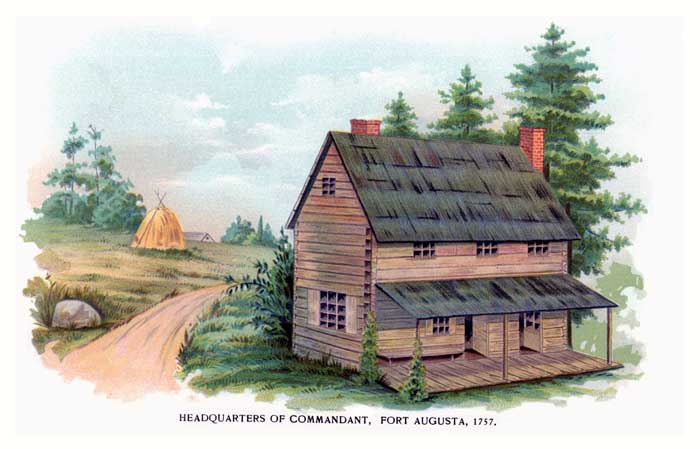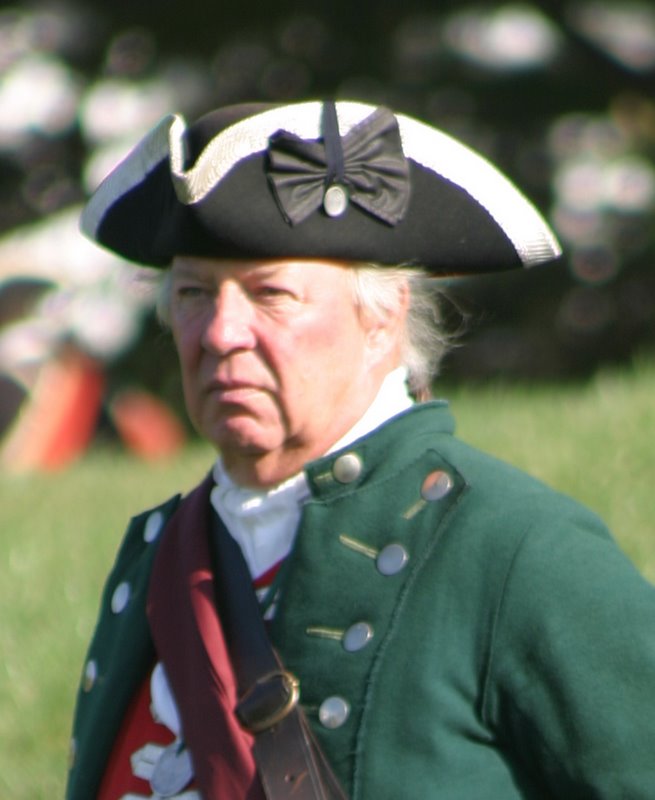A History
/SusquehannaRiver.jpg)

| Main Page |
| Time Line |
| History |
| Indian Trails and Shamokin (7000 BC-1763 AD) |
| Fort Augusta (1756-1792) |
| Founding of Sunbury (1772-1830) |
| Railroad and Canal Era (1830-1912) |
| Contemporary (1912-present) |
| Maps |
| Indian Trails and Shamokin (7000 BC-1763 AD) |
| Fort Augusta (1756-1792) |
| Founding of Sunbury (1772-1830) |
| Railroad and Canal Era (1830-1912) |
| Contemporary (1912-present) |
| Special Topics |
| Related Links |
| Works Cited |
|
 Headquarters of Commandant, Fort Augusta, 1757; Courtesy of USGenWeb archives |
||
While intricate plans were made for the fort, few services remained for more than a few months. Parson Steele was appointed the first regular chaplain on March 24, 1757, but left shortly thereafter. A hospital opened on February 10, 1757, but Dr. John Morgan complained to Major Burd that there was a lack of fresh water, provisions, and vegetables. Therefore the sick were transported across the river to Fort Hunter. Sixteen cannon were housed in the fort, but other supplies were meager and soldiers were not often paid as promised. Even officers went underpaid. At one time twenty-six soldiers were held in confinement for rebellion after not receiving their pay.
|
|||
|
||||
|
The Bucknell Environmental Center ▪ 835 Fraternity Road ▪ Bucknell University ▪ Lewisburg ▪ PA 17837▪ (570) 577-1490


